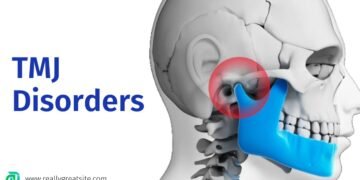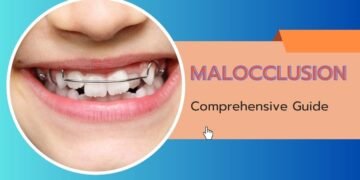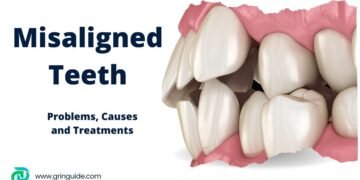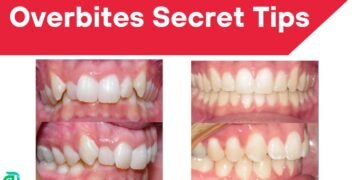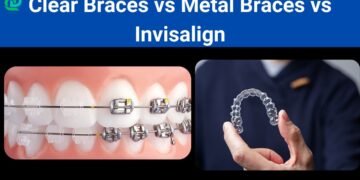Table of Contents
Introduction
An underbite, clinically referred to as Class III malocclusion, is a dental condition characterized by the lower teeth extending beyond the upper teeth when the mouth is closed. This misalignment can vary in severity, from a barely noticeable overlap to a pronounced protrusion of the lower jaw. Underbites are relatively common, affecting a significant portion of the population. However, the prevalence can vary based on genetic and demographic factors.
The etiology of underbites can be multifaceted, encompassing both genetic and developmental influences. Genetic predisposition plays a crucial role; if one or both parents have an underbite, their offspring are more likely to develop the condition. Developmental factors also contribute, including childhood habits such as thumb-sucking, prolonged use of a pacifier, or tongue thrusting. Additionally, discrepancies in jaw growth can lead to an underbite, where the lower jaw grows faster than the upper jaw, resulting in misalignment.
Underbites can have a considerable impact on various aspects of an individual’s life. From an oral health perspective, they can cause uneven tooth wear, increased risk of tooth decay, and challenges in maintaining proper oral hygiene. Functionally, underbites may impair chewing and speech, leading to digestive issues and communication difficulties. Aesthetically, the prominence of the lower jaw can affect facial appearance, potentially influencing self-esteem and social interactions. Moreover, severe underbites can contribute to temporomandibular joint (TMJ) disorders, causing pain and discomfort in the jaw area.
Understanding the complexities and implications of underbites is essential for recognizing the importance of early diagnosis and intervention. Addressing the condition promptly can mitigate its impact on oral health, functionality, and overall well-being, paving the way for effective treatment strategies and improved quality of life.
Symptoms and Diagnosis of Underbites
Underbites present a range of symptoms that can significantly impact a person’s daily life. One of the most noticeable symptoms is difficulty chewing food, which arises because the lower teeth extend beyond the upper teeth, causing misalignment. This misalignment can also lead to speech problems, making it challenging to pronounce certain words and sounds correctly. Jaw pain is another common symptom, often resulting from the strain placed on the jaw muscles and joints due to the improper alignment of the teeth.
Individuals with underbites might also experience chronic headaches, which are often linked to the tension in the jaw muscles. Additionally, an underbite can cause excessive wear and tear on the teeth, leading to chipping and increased sensitivity. In some cases, the lower jaw’s prominent appearance can affect a person’s facial aesthetics, potentially impacting their self-esteem and social interactions.
Diagnosing an underbite typically involves a comprehensive assessment by a dentist or orthodontist. The diagnostic process begins with a physical examination, where the dental professional will observe the alignment of the teeth and jaw. Dental X-rays are commonly used to provide a detailed view of the teeth, jawbone, and surrounding structures. These X-rays help identify the extent of the underbite and any related dental issues, such as impacted teeth or bone abnormalities.
Advancements in dental technology have introduced 3D imaging techniques, which offer a more sophisticated and accurate diagnosis. These techniques allow for a three-dimensional view of the patient’s oral structures, enabling a precise assessment of the underbite’s severity. The 3D images can also aid in planning effective treatment strategies, ensuring that the chosen approach addresses the specific needs of the patient.
By recognizing the symptoms and utilizing advanced diagnostic tools, dental professionals can accurately diagnose underbites and develop tailored treatment plans to alleviate the associated issues and improve oral health.
Non-Surgical Treatments for Underbites
Underbites, a common dental malocclusion where the lower teeth overlap the upper teeth, can be effectively managed through various non-surgical treatments. Orthodontic approaches like braces, clear aligners, and other specialized appliances are widely used to correct this condition. These treatments aim to gradually realign the teeth and jaw, improving both function and aesthetics.
Braces are one of the most traditional and effective methods for treating underbites. They work by applying continuous pressure over time to move teeth into the desired position. Metal braces, ceramic braces, and lingual braces are popular options, each with unique advantages. The duration of treatment with braces typically ranges from 18 to 36 months, depending on the severity of the underbite and the patient’s compliance with the orthodontist’s instructions.

Clear aligners, such as Invisalign, offer a more aesthetic and comfortable alternative to traditional braces. These custom-made, transparent trays fit snugly over the teeth and gradually shift them into place. Patients usually receive a new set of aligners every two weeks, and the total treatment time can vary from several months to a few years. Clear aligners are particularly popular among adults and teenagers due to their discreet appearance and the ability to remove them for eating and cleaning.
In addition to braces and clear aligners, other orthodontic appliances can be employed to correct underbites. Palatal expanders, for instance, are used to widen the upper jaw, creating more space for teeth alignment. Retainers may also be used post-treatment to maintain the results achieved with braces or aligners. The specific appliance recommended will depend on the individual case and the orthodontist’s assessment.
The effectiveness of non-surgical treatments for underbites largely depends on early diagnosis and timely intervention. Patients can expect significant improvements in both the alignment of their teeth and the overall appearance of their smile. Regular follow-up visits to the orthodontist are crucial to monitor progress and ensure the desired outcomes are achieved.
Surgical Options for Underbite Correction
Severe underbites, which cannot be adequately treated through orthodontic methods alone, often require surgical intervention. One of the primary surgical procedures for correcting an underbite is orthognathic surgery. This surgery aims to realign the jawbones, thereby improving the alignment of teeth and enhancing facial aesthetics.

Orthognathic surgery typically involves a collaborative approach between orthodontists and oral and maxillofacial surgeons. The process begins with a comprehensive evaluation, including diagnostic imaging and model creation of the patient’s dental structure. Once the pre-surgical orthodontic phase, aimed at aligning the teeth, is completed, the surgical procedure can commence.
During orthognathic surgery, the surgeon makes precise cuts in the jawbones to reposition them correctly. This may involve moving the lower jaw forward or the upper jaw backward, depending on the specific nature of the underbite. Plates, screws, or wires are used to secure the jaw in its new position, ensuring stability during the healing process.
Recovery from orthognathic surgery typically spans several weeks to a few months. Initial recovery involves managing swelling and discomfort, which can be alleviated with prescribed medications and cold compresses. Soft food diets and limited physical activity are recommended during the initial stages of recovery. Follow-up appointments are essential to monitor healing and ensure proper alignment.
Like any surgical procedure, orthognathic surgery carries potential risks, including infection, nerve damage, and complications related to anesthesia. However, the benefits often outweigh these risks, particularly in severe cases of underbite. Surgical correction can significantly improve the patient’s bite function, speech, and overall facial harmony, contributing to enhanced self-confidence and quality of life.
Choosing the Right Treatment: Braces vs. Surgery
When addressing underbites, selecting the appropriate treatment is crucial. Both braces and surgical options present distinct advantages and potential drawbacks, making the decision highly individualized. Various factors, such as the severity of the underbite, age, overall health, and personal preferences, play significant roles in determining the optimal approach.

Braces are a common and effective non-surgical option for underbite correction, particularly in children and adolescents. This method involves gradually realigning the teeth over time, which can significantly improve dental alignment and bite function. One of the primary benefits of braces is their non-invasive nature, minimizing the risks associated with surgical procedures. However, the treatment duration can be lengthy, often spanning several years, which might be a disadvantage for those seeking quicker results. Additionally, braces require ongoing maintenance and adjustments, which can be inconvenient for some patients.
On the other hand, surgical options, such as orthognathic surgery, are typically reserved for more severe cases of underbites, especially in adults where skeletal abnormalities are prominent. Surgery can provide a more permanent and immediate solution by directly addressing the bone structure. The recovery time for surgical interventions is generally shorter than the prolonged use of braces, which can be appealing for individuals looking for expedited results. Nonetheless, surgery carries inherent risks, such as infection, anesthesia complications, and the need for an extended recovery period. It is also a more invasive and costly option compared to braces.
When choosing between braces and surgery, it is essential to consider the specific characteristics of the underbite. Mild to moderate cases often respond well to braces, while severe underbites might necessitate surgical intervention. Age is another crucial factor; younger patients typically benefit more from braces due to ongoing growth and bone development. Conversely, adults with fully developed skeletal structures might find surgery more effective. Personal preferences, including tolerance for invasive procedures and willingness to commit to long-term treatment, should also influence the decision.
Ultimately, consulting with a dental or orthodontic specialist is vital to determine the most appropriate treatment plan for underbites. A thorough evaluation and discussion of the patient’s needs and circumstances will guide the choice between braces and surgery, ensuring the best possible outcome.
Post-Treatment Care and Maintenance
After successfully addressing an underbite, diligent post-treatment care is essential to maintain the results achieved. The journey to a perfect bite does not conclude once the primary treatment is completed; it requires ongoing attention to ensure long-term success. A crucial aspect of post-treatment care is adhering to recommended oral hygiene practices. Patients should continue to brush their teeth at least twice a day with fluoride toothpaste and floss daily to remove any food particles or plaque buildup that could compromise dental health.
Regular follow-up appointments with dental professionals are equally important. These check-ups allow the dentist or orthodontist to monitor the progress and detect any early signs of relapse or complications. During these visits, adjustments can be made to retainers or other maintenance devices if necessary. It is imperative to attend all scheduled appointments, as they play a vital role in the sustained success of underbite treatment.
Retainers are often prescribed as part of the post-treatment regimen. These devices help maintain the new position of the teeth and jaw. Depending on the severity of the initial underbite and the treatment used, retainers may need to be worn full-time initially and then gradually reduced to nighttime use. It is essential to follow the orthodontist’s instructions regarding retainer usage to prevent any regression of the corrected underbite.
Additionally, patients should be mindful of their diet and avoid hard or sticky foods that could damage dental work or appliances. Maintaining a balanced diet rich in vitamins and minerals will support overall dental health and contribute to the longevity of the treatment results. By integrating these post-treatment care practices, patients can ensure that their efforts in correcting an underbite yield enduring benefits.
Success Stories and Patient Experiences
Real-life success stories and personal testimonials can provide valuable insights into the journey of correcting underbites. These narratives shed light on the challenges faced, the treatment process, and the transformative impact on patients’ lives. One such story is that of Emily, a 24-year-old who dealt with an underbite since childhood. Initially, Emily struggled with both aesthetic concerns and functional issues such as difficulty chewing and speaking clearly. After consulting with an orthodontist, she opted for a combination of braces and jaw surgery. The treatment spanned over two years, during which she experienced some discomfort and lifestyle adjustments. However, Emily now describes her life post-treatment as “remarkably improved,” noting enhanced confidence and ease in daily activities.
Similarly, Michael, a teenager, faced bullying at school due to his pronounced underbite. His parents sought early orthodontic intervention, and Michael underwent a non-surgical treatment plan consisting of braces and a palatal expander. Within 18 months, his teeth alignment significantly improved, and the underbite was corrected. Michael’s self-esteem saw a notable boost, and his academic and social life flourished as a result.
Another compelling story is that of Robert, an adult in his late 30s. Robert had lived with an underbite for most of his life, believing it was too late to seek treatment. Encouraged by a friend, he visited an orthodontist and learned about the advancements in adult orthodontics. Robert chose Invisalign, which provided a discreet treatment option. Over the course of 18 months, Robert’s underbite was corrected, and he expressed immense satisfaction with the outcome, stating that it positively impacted both his professional and personal life.
These patient experiences highlight not only the diverse range of treatment options available but also the significant benefits of addressing underbites. From improved functionality to enhanced self-confidence, the positive impact of undergoing treatment for underbites is evident in these success stories.
Frequently Asked Questions
Underbites, characterized by the lower teeth extending beyond the upper teeth, can raise numerous questions for those affected. Here, we address some of the most common concerns regarding underbites and their treatment options.
-
What is the cost of treating an underbite?
The cost of treating an underbite varies greatly depending on the severity of the condition and the chosen treatment method. Orthodontic solutions such as braces, or clear aligners can range from $3,000 to $8,000. Surgical interventions, if necessary, can significantly increase the cost, potentially reaching upwards of $20,000. It is advisable to consult with an orthodontist to get an accurate estimate tailored to your specific needs.
-
Does insurance cover underbite treatments?
Insurance coverage for underbite treatments largely depends on the specifics of your insurance policy. Many dental insurance plans cover a portion of orthodontic treatments, but it is crucial to verify with your insurance provider. In some cases, medical insurance might cover surgical procedures if the underbite is causing significant health issues. Always review your policy and discuss with your insurer to understand the extent of coverage.
-
How effective are different treatment options for underbites?
The effectiveness of treatments for underbites varies based on the nature and severity of the condition. Braces and clear aligners are highly effective for mild to moderate cases, gradually correcting the alignment over time. In more severe cases, orthognathic surgery may be required to realign the jaw. Early intervention in children and adolescents often yields better results, as their jaws are still growing and more adaptable to orthodontic adjustments.
-
What advice can be given to parents of children with underbites?
Parents of children with underbites should seek early consultation with an orthodontist. Early diagnosis and treatment can prevent more complex issues in the future and may reduce the need for surgical intervention. Encourage children to maintain good oral hygiene and follow the orthodontist’s recommendations diligently. Regular follow-ups and a supportive environment can significantly enhance the treatment process and outcomes.

